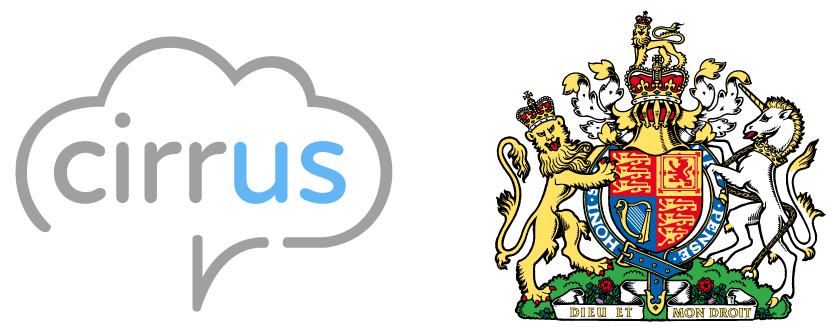What does a huge share of popular technologies have in common? The ability to save time. That’s certainly the case with 5G, which offers super-fast internet speeds, increases connectivity, and ensures low latency (minimal delay). The business benefits are clear, and that’s one reason why it is estimated that one-third of the world’s population will have 5G coverage by 2025.
Any service sector can enhance its operations with 5G, not least in customer service. Contact centres are the frontline of customer service – where efficiency and reliability are central to meeting customer expectations.
In this article, we take a look at why contact centres are perfectly placed to gain from the ongoing 5G revolution.
The current state of contact centres
Modern contact centres rely on a complex mix of technology, also known as a ‘stack’. These stacks typically include; voice over internet protocol (VoIP), essentially internet telephony; customer relationship management (CRM) systems, which are often hosted on the cloud; and various artificial intelligence (AI) powered tools.
These technologies are time and cost savers in their own right – but often, they rely on the best internet connection to work properly. Solutions such as VoIP and CRM face challenges such as latency issues, bandwidth limitations, and integration complexities.
Latency, in particular, can negatively impact real-time communication and lead to frustrating experiences for both customers and agents.
Potential impacts of 5G on contact centres
So, what exactly are the advantages offered by 5G which make them almost indispensable to today’s contact centres? Here we explain the impact of 5G on day-to-day contact centre operations:
Enhanced data transmission speeds
Increased data transmission speeds are what most of us would simply call ‘faster internet’. With 5G technology, your connection can reach unprecedented speeds. In a contact centre, this translates into faster call set-up times, reduced call drop rates, and enhanced overall call quality.
The result is smoother and more efficient customer interactions, which ultimately achieve customer satisfaction, which is what all contact centres aim for.
Reduced latency
Contact centres don’t speak to customers face-to-face – they rely on technology for real-time communication. This is another area in which 5G networks are a game-changer, offering ultra-low latency which cuts down the dreaded delay that hampers conversations over digital mediums.
With lower latency comes the ability to make seamless video calls that don’t freeze, share data with colleagues and customers in real time, and work through issues in collaboration with customers easily (sharing documents and other visuals)
Increased device connectivity
The Internet of Things (IoT) is essentially a network of connected objects. This network can automate many tasks and save time in lots of different operations – from transport to manufacturing and marketing.
How can the IoT help in contact centres? Using IoT sensors and smart devices, contact centres can deliver a better service to customers, as well as automate and optimise various daily tasks within a centre itself.
For example, smart sensors (connected devices enabling automated collection of data) related to service provision can give customer service agents much more data on a customer’s habits and how they are using a service or product. This can allow agents to inform and advise a customer more effectively. Then there are smart sensors within customer service environments that can monitor customer flow and agent availability, helping to optimise workforce management.
Better integration of advanced technologies
AI and machine learning can be good for business, breaking down data and automating ways to personalise customer communications. However – it is important to remember that these technologies are often underpinned by connectivity.
That’s where the high bandwidth and low latency of 5G networks come into play, paving the way for more seamless integration of these advanced technologies with existing customer support systems. The key takeaway here is that with 5G in a contact centre, using a combination of these sometimes complex technologies immediately becomes simpler.
Tatum Bisley, Product & Technology Evangelist at Cirrus, comments:
“5G technology addresses many challenges faced by today’s contact centres by improving data transmission speeds—meaning faster internet. In practical terms, this results in quicker call setup times, lower call drop rates, and improved overall call quality, leading to smoother and more efficient customer interactions and increased satisfaction.
“The ultra-low latency offered by 5G networks is a game-changer for real-time digital communication, enabling seamless video calls and real-time data sharing with colleagues and customers. This will lead to more collaborative and effective customer service.”
Real-world applications
As you might expect, telecommunications companies which provide 5G are right at the forefront of implementing the technology in contact centres. Vodafone is one of these providers, with 5G giving the company the foundation to use an AI-powered virtual agent in its call centres, reinventing the customer experience with a more responsive service.
The adoption of 5G is increasing all the time, and industry experts predict that the integration of 5G technology in contact centres will gain momentum as the infrastructure becomes more widely available.
Thanks to benefits such as enhanced speed and low latency – resulting in more reliable and efficient connections – there also looks to be great potential to incorporate virtual reality and augmented reality customer service.
Challenges and considerations
Despite its rapid rate of growth and huge potential, 5G isn’t without its challenges.
Some organisations will face practical hurdles in adopting 5G, including availability, infrastructure and cost. In some areas where there is 5G coverage, an upgrade of existing infrastructure – including systems and training personnel – will need to be factored into implementation.
Security concerns with broader and faster networks – due to the increased connectivity and data transmission – demand robust cybersecurity measures to protect customer data and comply with industry and government regulations.
5G: What does the future hold?
What do contact centres look like once widespread 5G adoption has been reached?
As we’ve touched upon, experts anticipate that virtual and augmented reality will play a bigger part in customer interactions and that AI will be increasingly integrated, facilitated by 5G networks. Expect more automation and a higher level of proactiveness in customer support.
The difference maker
When a calculated investment is made by a contact centre into 5G, it can be the difference between make-do and exceptional customer service.
With the ability to provide the backbone for game-changing technological changes, 5G will be a key enabler for improved customer service, higher customer satisfaction, and business growth,
Cirrus redefines your contact centre experience with our AI-powered CCaaS platform, delivering seamless customer journeys and empowering agents. Learn more about the CCaaS platform here or call us on 0333 103 3333 and speak to the team.




